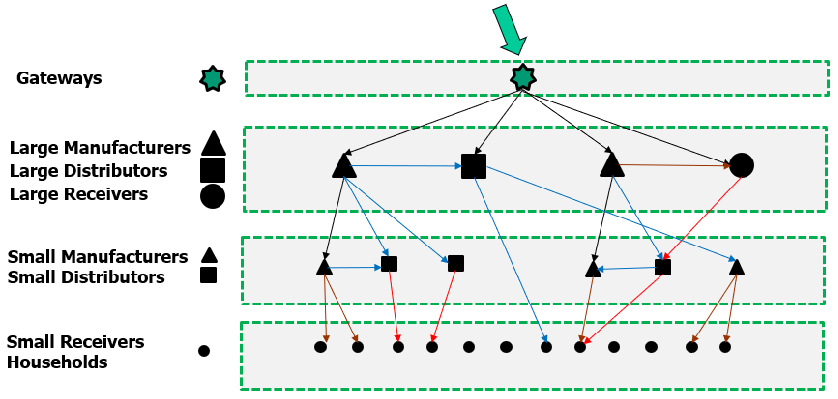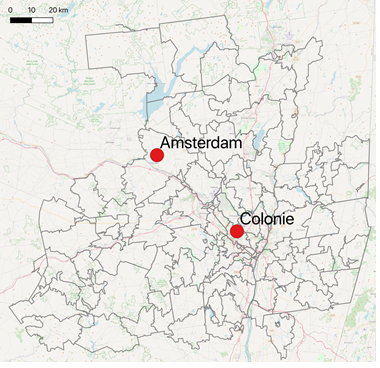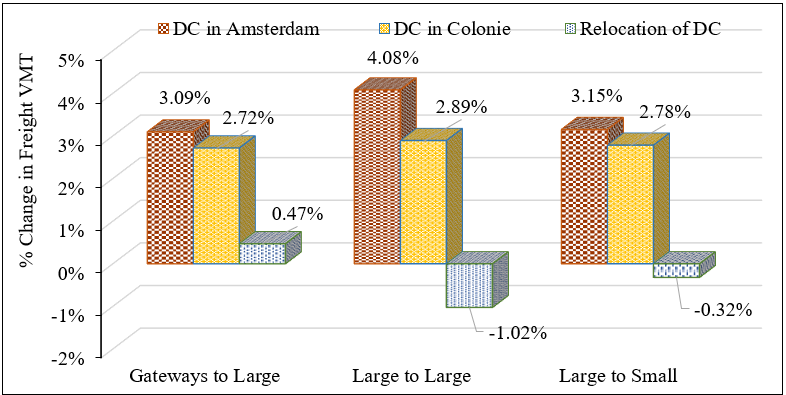A major component of the project is the development of a freight flow modeling tool to support the design and implementation of EEL initiatives. The Behavioral Microsimulation (BMS) is a custom-made computational system developed by RPI. The objective of the BMS is to assess the impacts of EEL initiatives by simulating all the tours required for delivering supplies to commercial establishments in a study area. The BMS considers a complete representation of the supply chain as shown in Figure 1, and the tours are simulated based on real life data about delivery stops and employment, as well as economic interconnections among industry sectors.

Figure 2 shows the main logic of the BMS. It uses real life data to simulate delivery tour. First, delivery tours are simulated for a base case, then they are simulated in scenarios considering the implementation of EEL initiatives. With the simulated delivery tours, it is possible to estimate indicators such as emissions, costs and VMT, and compare the indicators of the various scenarios with the base case.

As an example of application of the BMS, it was used to assess land use initiatives in the Capital District. Three scenarios were considered:
Introduce a new distribution center in Colonie
Introduce a new distribution center in Amsterdam
Relocate an existing distribution center from Amsterdam to Colonie

Differences in VMT from base case and the three scenarios considered (Figure 4) were computed for different freight flows of the supply chain modeled by the BMS: from gateways to large establishments, from large establishments to other large establishments, and from large establishments to small establishments.
Results show that:
Locating the DC in a more central area (Colonie) generates less freight VMT than locating it in the outskirts of the area (Amsterdam)
The central position of Colonie allows shorter trips to reach other establishments in the area
A new DC in Colonie generates an increase of 2.89% in VMT of freight vehicles going from large establishments to other large establishments, while locating a new DC in Amsterdam increases VMT by 4.08%
The relocation of an existing DC from Amsterdam to Colonie reinforces that the central location is more adequate to reach commercial establishments in the Capital District, as it would cause the VMT of trips going from large establishments to other large establishments to decrease 1.02%.

